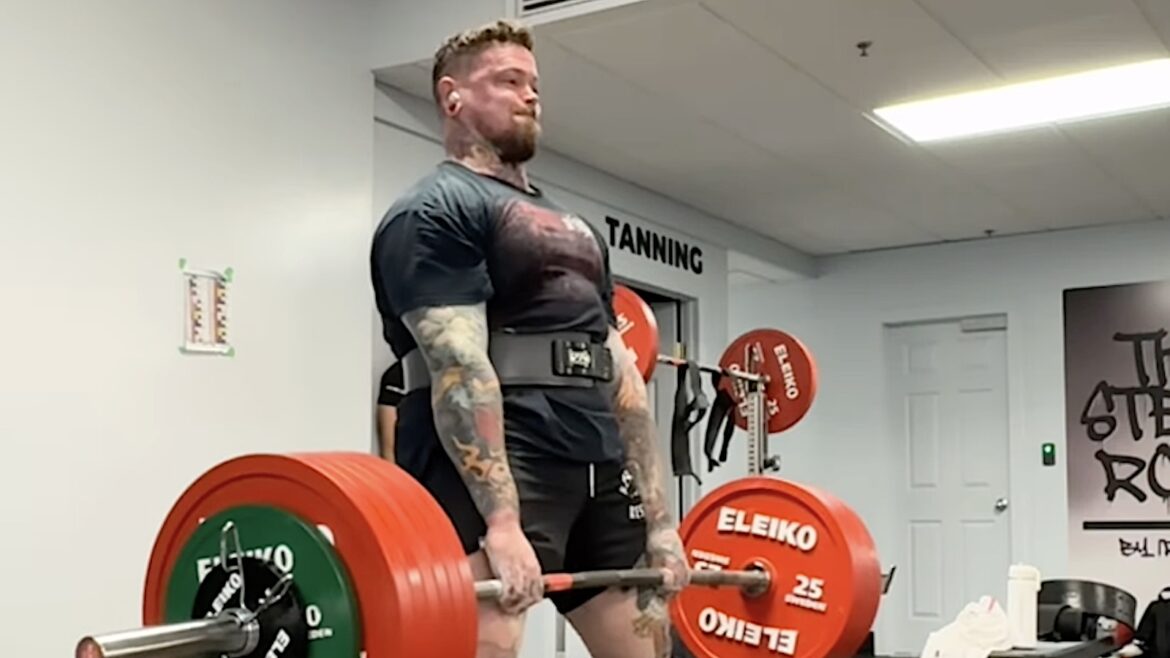Accelerate strength gains with these simple hacks.
Lifting progressively heavier weights builds bigger and stronger muscles. Adding too much weight too fast can be unsafe and unproductive. Lifting weights that are too light prevents progression. So, when and how much should you increase training loads? That depends on goals, experience, recovery habits, and other factors.
In April 2025, the Calgary Barbell shared their masterclass on weight progression. The tutorial covers basic progressions, perceived exertion, bar speed, and techniques.
Strength Progression Tips
- Properly manipulating volume and intensity.
- Use RPE to gauge training loads.
- 80% Good form is acceptable.
- Adjust expectations to lifestyle.
Understanding Progressive Overload
Progressive overload involves lifting more weight, adding more sets, reps, and even advanced techniques that enable doing more than in a previous workout. Recovery and lifestyle can help or hinder one’s ability to push harder or longer.
Muscles grow from tension, protein synthesis, and other physiological factors, while strength is developed similarly, and through neural adaptations. (1)
Different Models of Progression
There are many ways to program training. These are the three of the most common:
- Linear Progression: Adding weight each session. Ideal for beginners to capitalize on rapid neuromuscular adaptations, or “newbie gains.”
- Wave (Undulating) Progression: Once a beginner’s gains stall, “start planning some fluctuation into training.” Decrease volume, increase intensity, change your training, and repeat.
- Autoregulation: Using Rate of Perceived Exertion (RPE) to adjust loads based on daily performance.
On days when it’s present, we’ll work harder, and on days when it’s necessary, we’ll pull back.
—Bryce Krawczyk
RPE is helpful for gauging performance ability to capitalize on the days a lifter feels strong and avoids forcing weights they’re incapable of lifting, which can adversely impact recovery.
Research shows autoregulation, primarily through RPE-based models, can boost strength gains over fixed percentage training (using a percentage of one-rep max). (2)
When to Add Weight
Here are some good indicators to add weight:
- Bar Speed: The weight is moving smoothly at the desired pace.
- RPE Lower than Programmed: If programmed to do a set at RPE eight but rate it a six, add weight.
- Minor Technique imperfections: Don’t fret over minor technique flaws. Aim for load progressions.
Apply the rule of 80… You want 80% of your reps to look about 80% good.
—Bryce Krawczyk
When Not to Add Weight
Three reasons to wait:
- Major Technique Breakdown: Reinforcing consistent bad form can backfire.
- Grinding Every Rep: Pushing physical limits too often is bad for volume training and recovery.
- Poor External Factors: Sleep, nutrition, and stress affect strength performance.
Be realistic and adjust expectations if you know odds are stacked against you.
—Bryce Krawczyk
Other Ways to Progress
You don’t always need more weight to make gains. Alternatively:
- Add or decrease reps and sets: Try 4×5 or 5×6 if 5×5 is too challenging.
- Incorporate accessory movements: Change up your lifts for a novel stimulus.
- Track and improve bar speed: Helps blast past sticking points.
These findings echo that manipulating training volume, intensity, and movement variations promotes continued adaptation. (3)(4)
References
- Hughes DC, Ellefsen S, Baar K. Adaptations to Endurance and Strength Training. Cold Spring Harb Perspect Med. 2018 Jun 1;8(6):a029769. doi: 10.1101/cshperspect.a029769. PMID: 28490537; PMCID: PMC5983157.
- Greig L, Stephens Hemingway BH, Aspe RR, Cooper K, Comfort P, Swinton PA. Autoregulation in Resistance Training: Addressing the Inconsistencies. Sports Med. 2020 Nov;50(11):1873-1887. doi: 10.1007/s40279-020-01330-8. PMID: 32813181; PMCID: PMC7575491.
- Mangine GT, Hoffman JR, Gonzalez AM, Townsend JR, Wells AJ, Jajtner AR, Beyer KS, Boone CH, Miramonti AA, Wang R, LaMonica MB, Fukuda DH, Ratamess NA, Stout JR. The effect of training volume and intensity on improvements in muscular strength and size in resistance-trained men. Physiol Rep. 2015 Aug;3(8):e12472. doi: 10.14814/phy2.12472. PMID: 26272733; PMCID: PMC4562558.
- Lorenz DS, Reiman MP, Walker JC. Periodization: current review and suggested implementation for athletic rehabilitation. Sports Health. 2010 Nov;2(6):509-18. doi: 10.1177/1941738110375910. PMID: 23015982; PMCID: PMC3438871.
Featured image: @bryce_cbb on Instagram
